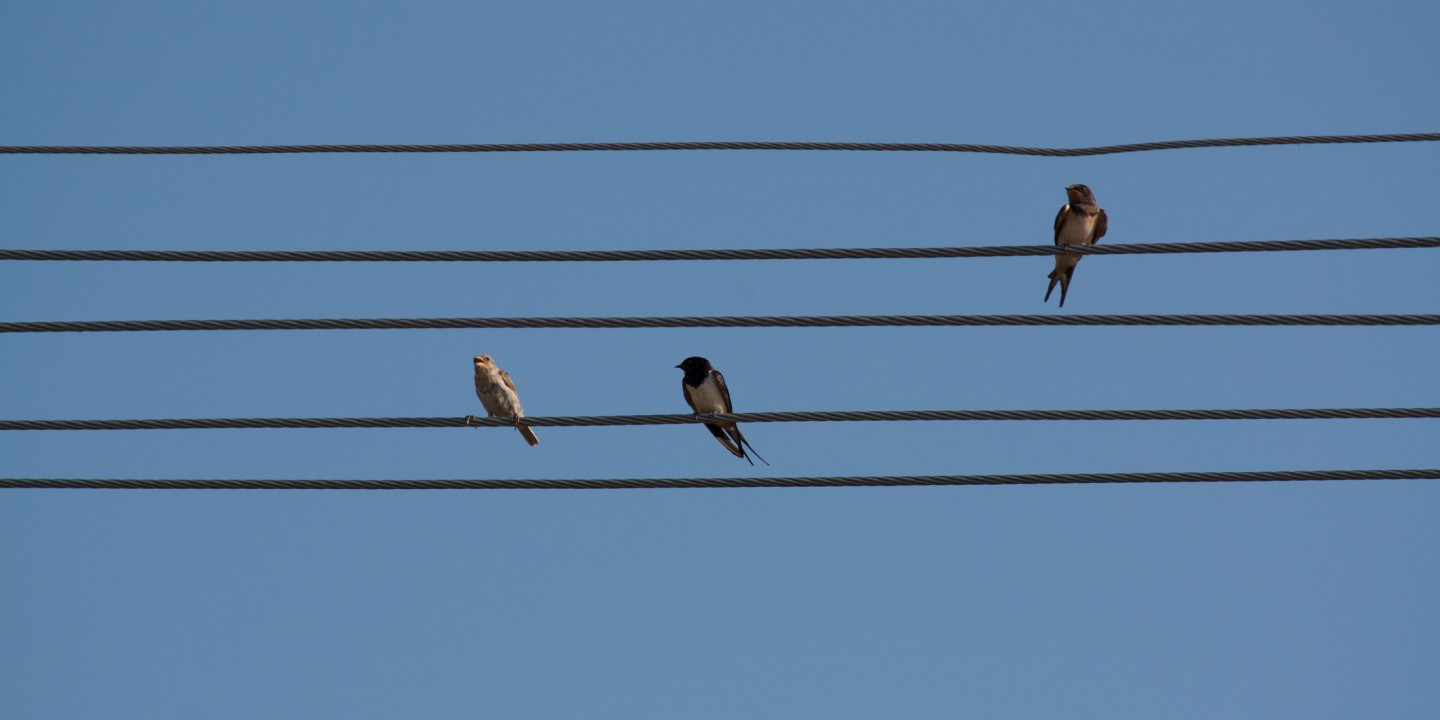
I spent this week giving attention to birds. I stood still by my window waiting for birds; I stopped mid-conversation to watch a bird on a picnic bench, tilting her head toward me. I waited in the long spaces where there were no birds, observing their absence. I scoured pictures, carefully drawn by patient hands—illustrations of speckled eggs and spackled nests. I leafed through photographs of grackles and cowbirds, nuthatches and waxwings, kinglets, larks, and ibises.
“Look at the birds of the air,” says Jesus in Matthew 6. I spent this week giving attention to birds because Jesus thinks that’s something we should do with our time.
Taking time for birds puts us in good company. A lesser-known Christian tradition gave special attention to animals of all kinds. In the Middle Ages, people constructed books of nature called bestiaries. Christians at this time assumed that there were lessons embedded in the natural world, that in the lives of animals we can discover truth about who God is, that God is somehow revealing God’s self through things that creep and crawl. Bestiary manuscripts compiled such allegories alongside detailed illustrations. There are thousands of these texts and their accompanying pictures, each beast revealing a moral or spiritual lesson.
Many of these move quickly from the description of the animal to the lesson discovered therein. This fish is like the Trinity; that pelican is like the sacrifice of Jesus; a rabbit displays an ethical lesson. But on some pages the monks find themselves carried away by the depictions of the animals themselves. Writing about swallows, Pliny the Elder gets distracted by the details: wings that gather water to wet the parched earth, the gentle parity of mothers who distribute equitably to their chirping offspring, the birds’ “swift and swerving” flight. Some writers catch themselves in the diversion of such descriptions and manage to tack on a pithy phrase at the end about how God is like this or that. Others forget all together, distracted into attentive regard.
It’s this tender, attentive regard that works itself into Psalm 84: “Even the sparrow finds a home, and the swallow a nest for herself, where she may lay her young at your altars, O Lord of hosts, my King and my God.” It is no surprise that sparrows and swallows made their homes in the expanses of the temple in Jerusalem. These are birds whose lives exist near to ours. Swallows and sparrows are found where there are people, constructing their homes in cracks in walls, in deserted barns and abandoned lofts where people have left space.
The temple was such a place. It was also the place where God’s life ran free. It was the place that gave shape for God’s spirit; people drew near to it in order to draw near to God. In Psalm 84 we discover God welcoming sparrows to pack the dirt of their nests, to line those nests with feathers, to brood patiently over a clutch of six eggs (always with one egg noticeably lighter than the others). These winged creatures find room in God’s holy place, building nests in the midst of God’s spirit—on the altars themselves.
In Our World, Mary Oliver recalls observing this kind of attentive regard, this opening of one’s life to the intrusion of created things, in her late wife:
It has frequently been remarked, about my own writings, that I emphasize the notion of attention. This began simply enough: to see that the way the flicker flies is greatly different from the way the swallow plays in the golden air of summer. It was my pleasure to notice such things, it was a good first step. But later, watching M. when she was taking photographs, and watching her in the darkroom, and no less watching the intensity and openness with which she dealt with friends, and strangers too, taught me what real attention is about. Attention without feeling, I began to learn, is only a report. An openness—an empathy—was necessary if the attention was to matter.
Oliver’s words remind me of a neighbor of mine who is an ornithologist. When we talk outside I notice that every once in a while, his eyes dart in the direction of a birdsong. He is always searching the skies, seeing and hearing birds that are invisible to me. He’s trying to listen to me, but he’s distracted by something I can’t see, by noise that filters into the background of my world.
I imagine that God is like my neighbor. God goes about important business yet can’t help but be diverted into attention for birds. What takes practice for me—this discipline of paying attention—is simply how God is. In God’s life all creatures have weight; they cannot help eliciting God’s attention. God cannot but be drawn back to them.
The psalmist invites us to notice that there is a bird nesting at the altar. As I gave my regard to birds this week, I noticed my attention drawn to scenes I often overlook. At the public library I saw a woman hard at work looking for a job, using a computer reserved for that purpose. Her two toddlers were crawling under the table, jostling for the coveted spot between their mother’s feet. I remembered a species of sparrow that builds nests out of whatever material is available, making life out of whatever it can find. Looking at these little sparrows nesting under the computer table, I thought about other nests: tent cities and refugee camps, shelters cropping up in the woods, people who sleep in cars or on friends’ couches or under the doorways of church buildings. God can’t help but pay attention to them. God’s eyes turn toward them.
When I imagine the Sermon on the Mount, I picture Jesus pausing after telling the crowd to “look at the birds of the air.” He does what my ornithologist neighbor does: his eyes catch a flutter of movement in a tree, as a bird hops from branch to branch. His attention lingers on the birds around him, caught up in what the psalmist can’t help noticing: those mama swallows with their chirping babies, mouths opened wide for insects; those thick, dark nests made of muddy pebbles; those freed bodies flitting about the open air of the temple.
In sparrows and swallows we discover that to delight in the unexpected intrusion of another is to dwell in God’s life. We learn that God’s distraction for us, for all created things, is love.
A version of this article appears in the August 16 print edition under the title “Sparrows, swallows, and us.”






